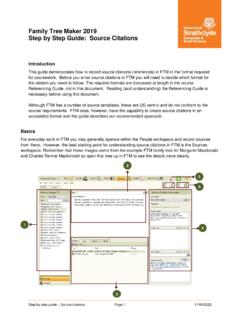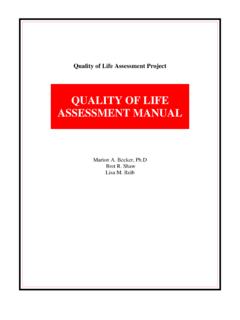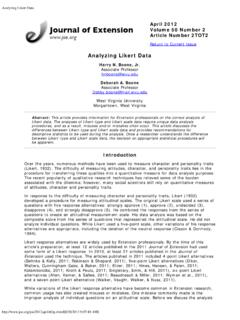Transcription of Guidance on Marking Assessments in UNDERGRADUATE AND ...
1 Guidance ON Marking Assessments IN UNDERGRADUATE AND POSTGRADUATE TAUGHT COURSES Version No. Description Author Approval Effective Date University Guidance on Marking Assessments in UNDERGRADUATE and Postgraduate Taught Courses Assessment and Feedback Working Group Senate From academic year 2019-20 Version the place of useful learning The University of Strathclyde is a charitable body, registered in Scotland, number SC015263 Guidance on Marking Assessments in UNDERGRADUATE and Postgraduate Taught Courses Accuracy in Marking and fairness in the way all students are assessed is crucial to ensuring a high quality degree in which students, employers and postgraduate selectors can have confidence. The Marking of all summative Assessments should be in alignment with published assessment criteria and appropriate standards.
2 This minimal Guidance aims to support staff when developing Marking criteria to assess individual UNDERGRADUATE and post-graduate taught Assessments . This approach to Marking is commonly referred to as criteria-referenced , where individual Assessments are assessed against explicit criteria. The University does not endorse the alternative norm-referenced approach to Marking , where a fixed proportion (or narrow range of proportions) of students are awarded grades within each grade band. Individual Assessments should be graded using one of the two scales below, Type A (the full 100 point percentage scale ) or Type B (a restricted percentage scale ), dependent on the type of assessment. Marks should take account of the performance descriptor (underlined) at each band, and the wording of feedback should align with the descriptor for the selected performance level.
3 Note that this Guidance relates to the Marking of individual Assessments , and not to the aggregate marks returned for modules. Staff will need to supplement this Guidance , or provide alternative detailed assessment criteria that align to the learning outcomes being assessed at the level of study, so that students understand the criteria by which their work is assessed. This must be done in ways that clearly demonstrate equivalence and with an approach to Marking that is consistent with this Guidance . Type A: Numerically based Assessments , Assessments with short answers Where Assessments are numerical in nature, or where there are questions with each answer attracting a small number of marks, the full 0-100 percentage point Marking scale should be used. This type of assessment is common where there is a clear right and wrong answer ( multiple choice examinations and some Assessments in Science, Engineering, and Languages may pose questions with answers that are correct or incorrect, and using the 100 point percentage Marking scale is therefore meaningful).
4 The Type A scale may also be meaningful for Assessments where the total number of marks that can be awarded is less than 100, and where the mark is then converted to the full percentage scale . Type B: Other Assessments Where an assessment cannot be categorised as Type A, such that there is no clear right and wrong answer, and instead it may be the quality of analysis and argument that are assessed ( essays), Assessments should be marked using the Type B scale , which is a restricted percentage scale . The aim of employing this Marking scale is to improve the accuracy, reliability and transparency of the academic judgement of Assessments where the difference between each point on the Marking scale can be meaningfully evaluated and described using this restricted percentage scale , as opposed to the Type A scale where differences between each individual point on the 100 point scale (for example, the difference between a mark of 61 and 62) are difficult to differentiate, and as a result greatly diminish the reliability of this scale in assessing such work.
5 Staff may use the Type B scale to holistically judge the quality of a student s work in line with the relevant assessment criteria, or they may use the scale to develop Marking rubrics that clearly describe the quality of work at different levels of attainment for each criterion separately. Where staff use such Marking rubrics to assess students work, Guidance on Marking Assessments in UNDERGRADUATE and Postgraduate Taught Courses the Type B scale can be applied at the level of assessing attainment against individual criteria ( quality of argument, use of evidence) included in the rubric. This may result in an overall mark for an assessment that is not included within the Type B scale . This is acceptable, since the scale is applied at the level of assessing attainment against each assessment criterion.
6 Appendix 1 shows examples of assessment strategies using Type A and/or Type B scales. Where numerical marks are not appropriate, marks may be returned on a pass/fail basis, subject to approval by the relevant Faculty s Vice Dean Academic. Class Type A Type B Descriptor UG: First PG: Distinction 90 - 100 92, 100 Exceptional demonstration of the learning outcomes Exceptional in most or every respect, the work demonstrates all of the characteristics noted for First class in the Outstanding range below and is also well beyond the level expected of a highly competent student at their level of study, and could not be bettered for the level of study. 80 - 89 84 Outstanding demonstration of the learning outcomes Outstanding in most respects, the work is what might be expected of a highly competent student at their level of study.
7 The work demonstrates most of the following attributes: - A breadth of appropriate and focussed knowledge, and a deep and critical understanding of the subject matter - An outstanding standard of synthesis and evaluation, and a critical and insightful analysis - Complexity of thought, creativity, insight and/or originality - Evidence of comprehensive reading and thought of significant complexity and well beyond, but still relevant to, course/assignment materials - Outstanding use of references and exemplars, well beyond, but still relevant to, course/assignment materials - An outstanding standard of writing and communication and/or presentation, that is clearly and logically structured 70 - 79 72, 75, 78 Excellent demonstration of the learning outcomes Excellent in most respects, the work is what might be expected of a very competent student at their level of study.
8 The work demonstrates - Wide, appropriate and focussed knowledge and critical understanding of the subject matter - An excellent standard of synthesis and evaluation and/or shows critical and insightful analysis - Some complexity of thought, insight and/or originality - Evidence of comprehensive reading and thought beyond course/assignment materials - Excellent use of references and exemplars - An excellent standard of writing and communication and/or presentation, that is clearly and logically structured UG: Upper second 60 - 69 Low : 62 Mid : 65 Comprehensive demonstration of the learning outcomes Very good or good in most respects for the level of study in displaying attainment of the learning outcomes, with marks at the higher end of this scale reflecting stronger and more Guidance on Marking Assessments in UNDERGRADUATE and Postgraduate Taught Courses PG: Merit High : 68 consistent attainment of the learning outcomes.
9 This work demonstrates: - A very good or good level of appropriate knowledge and critical understanding of the subject matter, with only occasional lapses in detail - Very good or good synthesis, analysis, reflection, understanding and/or critical evaluation - Evidence of reading and thought beyond course/assignment materials - Appropriate use of references and exemplars - A good standard of writing and communication and/or presentation, that is clearly and logically structured UG: Lower second PG: Pass 50 - 59 Low : 52 Mid : 55 High : 58 Satisfactory demonstration of the learning outcomes: The work is satisfactory for the level of study and clearly meets the requirements for demonstrating the relevant learning outcomes. Marks at the higher end of this scale reflect stronger and more consistent attainment of the learning outcomes for this standard of work.
10 This work demonstrates: - Satisfactory knowledge and a reasonable understanding of the essential material - Weaknesses in the synthesis and/or analysis, reflection, understanding and critical evaluation of material, resulting in parts of the work being overly descriptive in nature - General accuracy with occasional mistakes and/or reduced focus on the main issue or lapses in detail - Limited evidence of reading and thought beyond course/assignment materials - A satisfactory standard of writing and communication and/or presentation, where there may be weaknesses in the clarity and/or structure of the work - Appropriate use of references and exemplars, though there may be minor flaws in the referencing technique UG: Third PG: Fail 40 49 Low 3rd: 42, Mid 3rd: 45, High 3rd: 48 Assessments AT YEARS 1-4: Limited demonstration of the learning outcomes.












